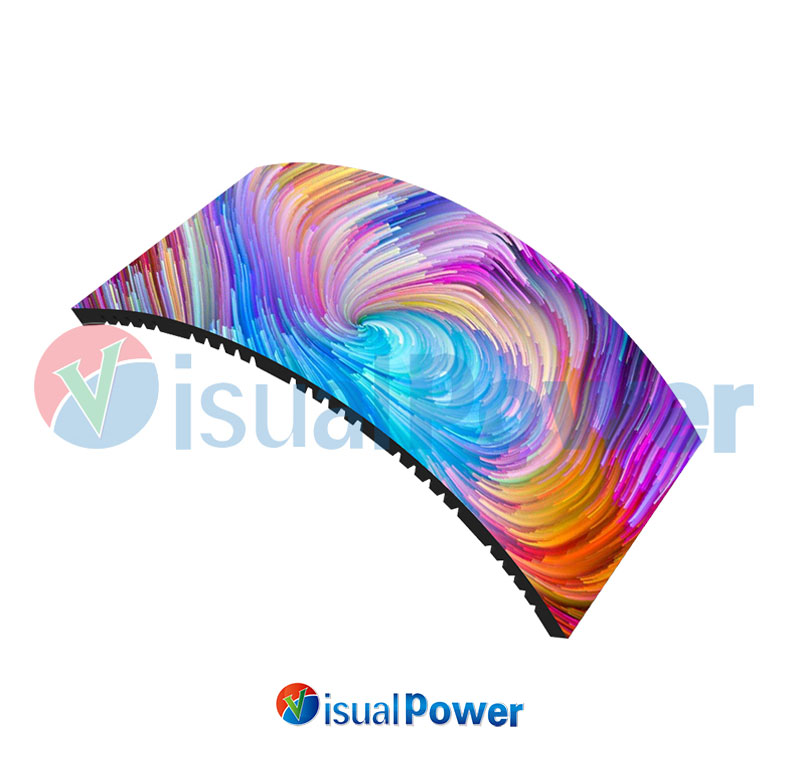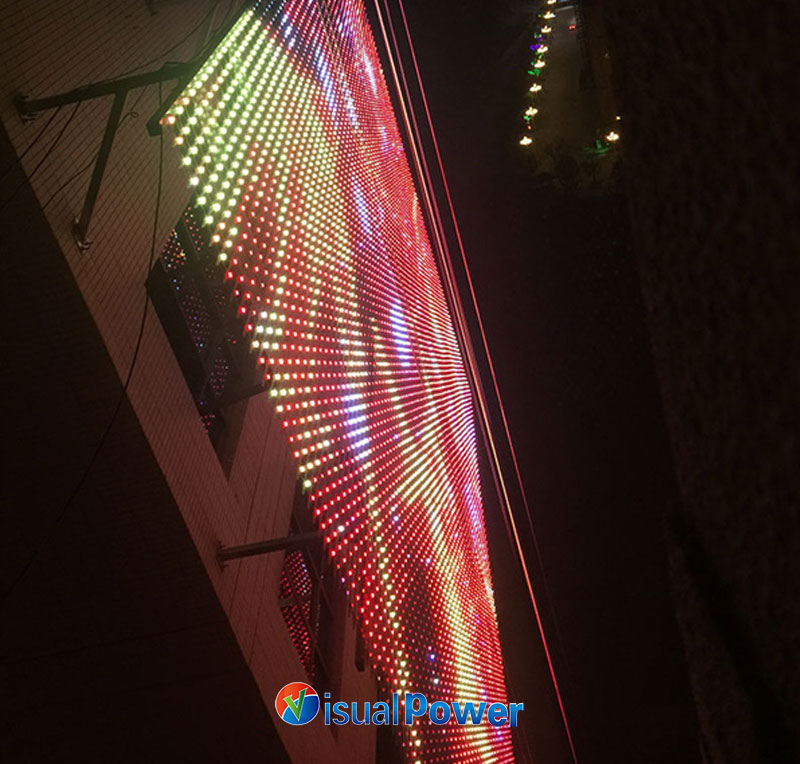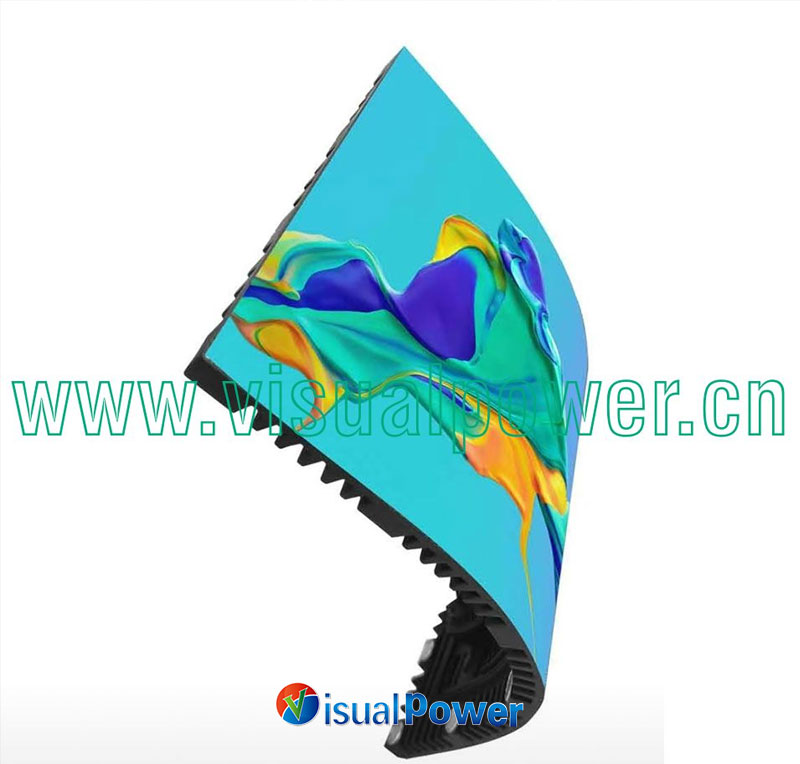categorías
- Noticias (77)
- caso de estudio (6)
The first time I seriously studied the term “Flexible LED Display” was in the underground space of an art gallery. It was a new media art exhibition. In the center of the exhibition hall hung a meandering and moving display screen, which looked like an electric light waterfall flowing down from the ceiling. The colors surge along the soft curved surface. Each frame of the image is like a woven fabric rather than an electronic picture in the traditional sense. En ese momento, I realized that this was not merely an innovation in technology, but also a transformation in visual experience.
Since then, I have begun to pay attention to those “non-linear” screens around me.
I once saw a “digital showcase” constructed with flexible LED screens in a clothing store. The models were no longer static dolls but silhouettes that danced with the light. Also on the main stage of a conference, the background wall was seen shaking like waves, and the visual rhythm was almost in sync with the speaker’s breathing. In the circular atrium of a certain airport, the arc-shaped display screen on the ceiling rolls out flight information, weather changes, and even a seamless skyline animation, making people feel as if they have been transported to the early morning of another city.
All these scenarios are inseparable from one core word: Flexible LED Display.

When it comes to flexible displays, the first thing that many people think of is “bendable”. Sure, this is its most prominent feature in structure. But what I want to say is that its “softness” goes far beyond this.
It is “suave” in its adaptability. Traditional LED screens are like a wall, while Flexible LED screens are like a piece of cloth. They can be attached to cylindrical surfaces, vaults, and steps, with almost no shape restrictions. It is more like a display medium born for architecture rather than a device attached to the wall. Especially screens like those displayed by Visualpower, they do not display for the sake of display but blend extremely naturally with the language, structure and atmosphere of the venue.
Its “softness” lies in its expressive power. Images are no longer confined to a fixed plane but can be expanded, turned, and even broken and reorganized on curved surfaces. This kind of expressiveness provides designers with an unprecedented space for imagination. We can no longer only use the screen in the way of “playing content”, but can use it to “carve time”, expressing the flowing thoughts and rhythms.
This was also what I understood later. Flexible LED may seem like a very fashionable thing, but when it is actually implemented, it will be found that it is not a panacea. The scenarios it is suitable for are often those where the integration of the screen and the architectural space is considered at the initial design stage – that is to say, it is not merely a display device, but a part of a spatial composition language.
Por ejemplo, once a friend was designing a brand pop-up space and he chose Visualpower flexible LED modules as the entrance surround display belt. The effect is extremely stunning. But the prerequisite is that from the very beginning, he presupposed that the entrance was not a traditional door, Pero un “circular welcome image”, and the audience had to pass through the image instead of entering the room. This kind of thinking is the core that enables flexible screens to truly realize their value.
Sin embargo, if you just temporarily want to replace a “regular screen” with a bendable one, there is a high probability that you won’t have any revolutionary experience. Al final, technological innovation can only bring about a true “flexible revolution” when there is a match in thinking.

When many people talk about Flexible LED displays, they first mention “thin and light”, “alto contraste”, y “high refresh rate”. Sin embargo, if these terms are merely used to pile up parameters, they will soon lose their power.
I prefer to start from the practical application experience and share some feelings that ordinary people can understand.
Por ejemplo, “light” actually means that when you build an immersive scene, you don’t need to do too much structural reinforcement to bear the weight of the screen body. This is a convenience for event curators. Por ejemplo, “modularization” means that you can first build a part of the display surface and then complete the content based on the on-site atmosphere later, without the need for a one-time investment and configuration. This flexibility serves as a buffer for both the budget and the execution cycle.
As for high brightness and high definition – my experience is that it makes the picture no longer a background board, but a true “voice”. When you walk into a dark space, if the flexible LED screen is dimmed properly, the picture seems to be breathing. You can sense that it is not an illuminated image, but a self-luminous thought.
I have always believed that if a good technology can only perceive “tecnología”, then its completion level is insufficient.
Flexible LED screens, por otro lado, are precisely a kind of technology that is “hidden away”. It integrates into the venue, participates in the expression and builds the atmosphere in a sufficiently restrained way, but does not deliberately highlight its existence. This ability to “become invisible” is a kind of advanced design aesthetics.
I once saw a light strip display screen in a cafe – the screen was stuck under the curved ceiling and only played dynamic images of forest birds singing slowly at certain times. It doesn’t have a stunning visual impact or fast-paced show-off content, but it offers a continuous sense of immersion. And this gentle presence, in my opinion, is the greatest charm of Flexible LED displays.

Al final, all the advantages of the “Flexible LED Display” we are discussing today: free bending, flexible assembly, strong image expressiveness, high spatial adaptability… All should point to one goal – gente, the experiences within it.
Whether it is a shopping mall, an exhibition, a stage or a public space, what we truly hope for is not merely a display of technology, but to create a sensory environment that makes people willing to stop, pause, think and interact.
This is why I became obsessed with this flexible display technology. It’s not because it’s so “high-end”, but because it’s becoming more “considerate”.